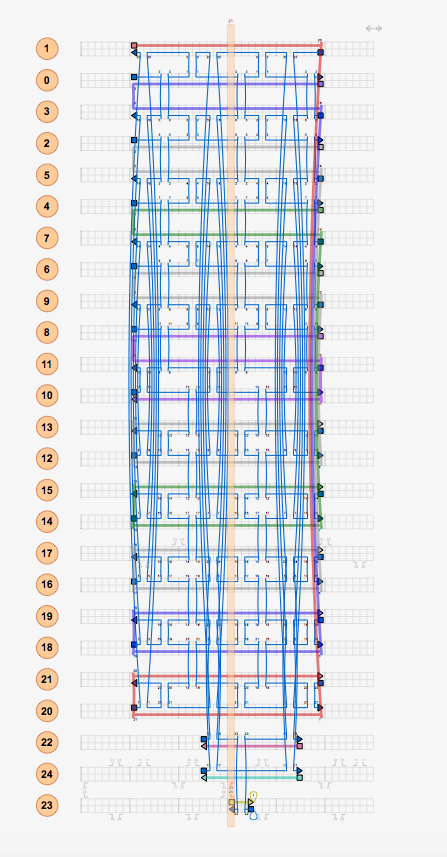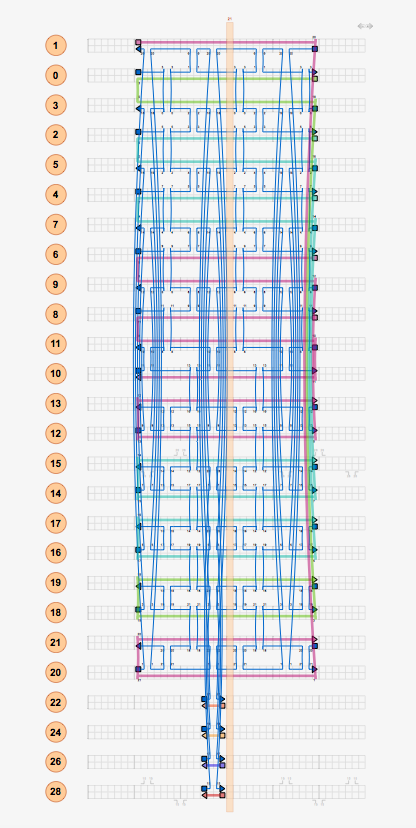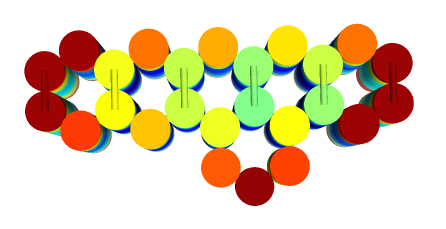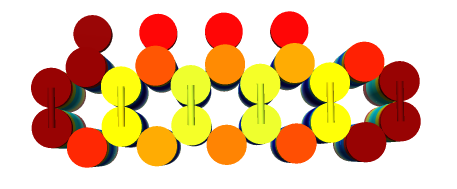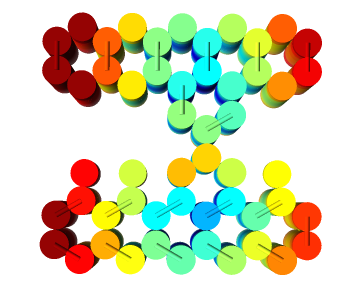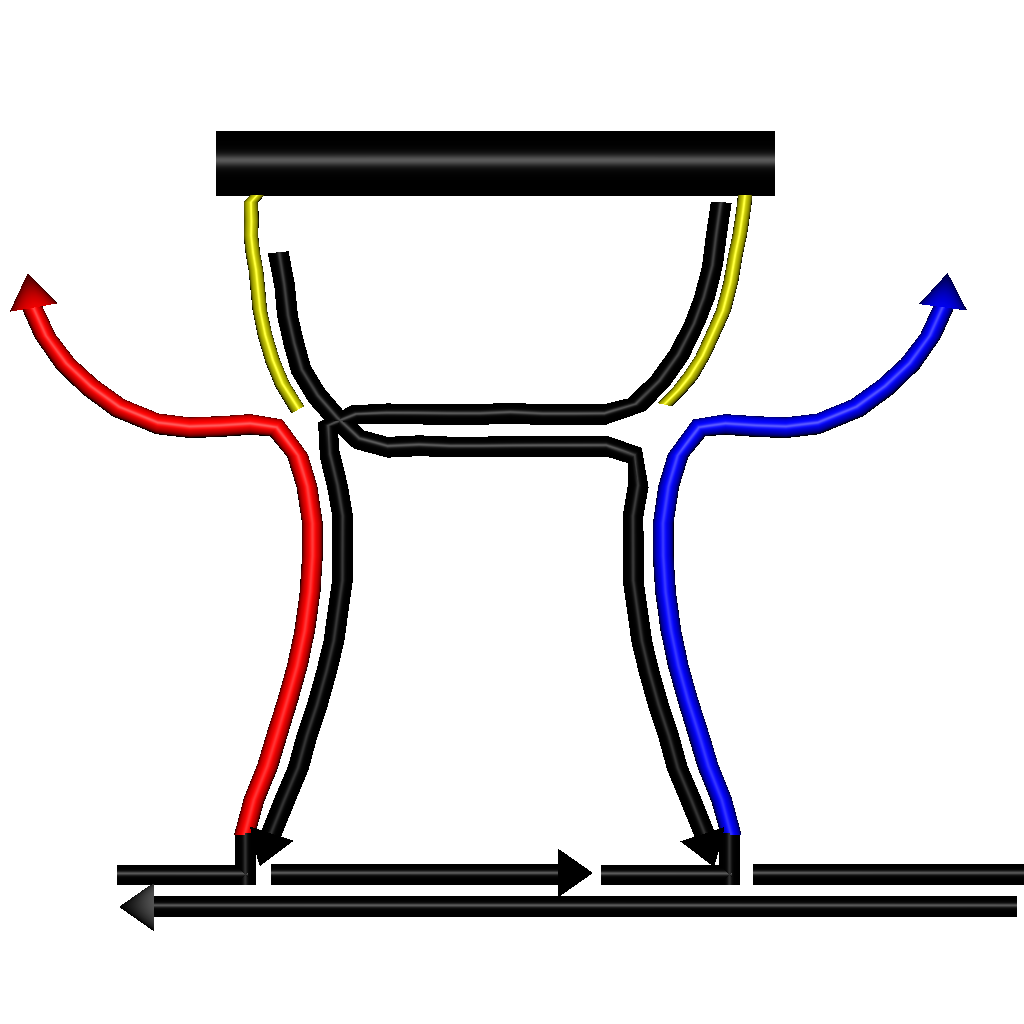
Figure 1 shows how to connect our DNA walker (transporter) to a DNA origami structure (transported material), where the DNA origami structure is depicted by the black-colored box. The key idea is to prepare the connectable single strand region extended from the main DNA origami body as a transported material. The DNA walker also has such a connectable single stranded region. This connecting idea is very simple, but it provides us a reasonable mechanism for our purpose! Just in case, we show an design example to demonstrate the feasibility as follows: first, we designed this structure to contain two parts: 1) a DNA Walker plus a plate-shaped origami connected object (transported material) and 2) the DNA Walker footprint (Ground). The design drawing and image are shown below (Figures 2 and 4 for the transported material; Figures 3 and 5 for the Ground, respectively). We also used caDNAno2[6] for designing and Cando[7] for creating images and simulation videos.
By combining these structures, we obtained an image in Figure 1, as represented by DNA origami (Figure 6).
Movie 1 shows a simulation of the behavior of the structure in Figure 6 in liquid, indicating that the proposed connecting mechanism of the transporter and transported material/grand is thermodynamically stable.



